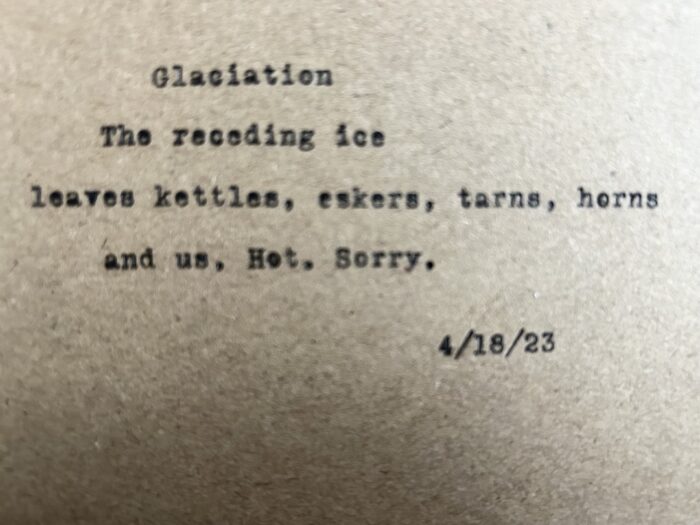
Glaciation
Haiku 18
The receding ice
leaves kettles, eskers, tarns, horns
and us. Hot. Sorry.
#lizsharespoems
#30daysofhaiku
#nationalpoetrymonth

Glaciation
Haiku 18
The receding ice
leaves kettles, eskers, tarns, horns
and us. Hot. Sorry.
#lizsharespoems
#30daysofhaiku
#nationalpoetrymonth
Geology is just plain cool. I think what I love most about it is seeing it as something so set, so stable, so ancient and immutable and hard-as-rock-like, when really it’s wildly dynamic. We’re just not paying close enough attention to see that…
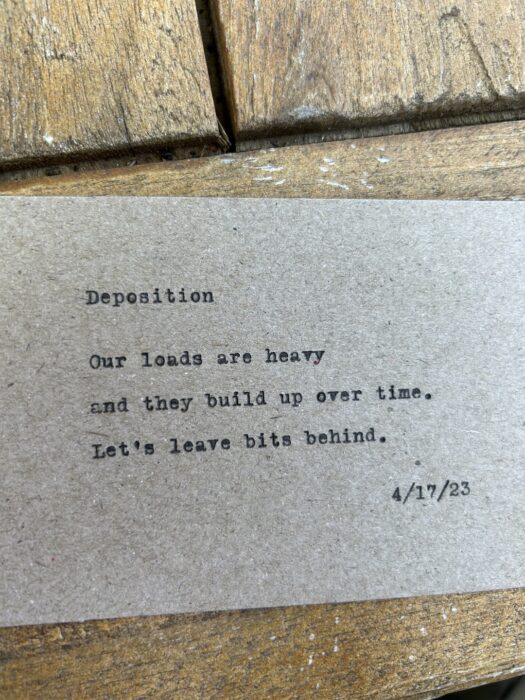
Deposition
Haiku 17
Our loads are heavy
and they build up over time.
Let’s leave bits behind.
#lizsharespoems
#30daysofhaiku
#nationalpoetrymonth
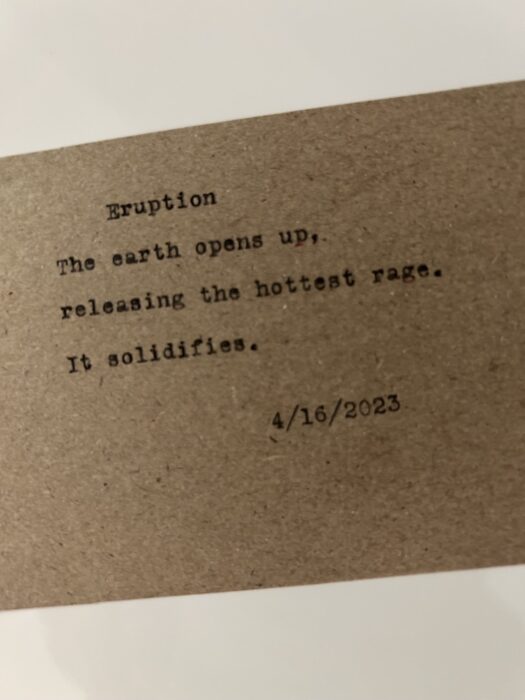
Eruption
Haiku 16
The earth opens up,
releasing the hottest rage.
It solidifies.
#lizsharespoems
#30daysofhaik
#nationalpoetrymonth
Oh, I’m excited about this — it’s geology week, starting with erosion. And right away I’m realizing that geological processes are pretty bang-up on their own but also really lend themselves to metaphor. Here we go…
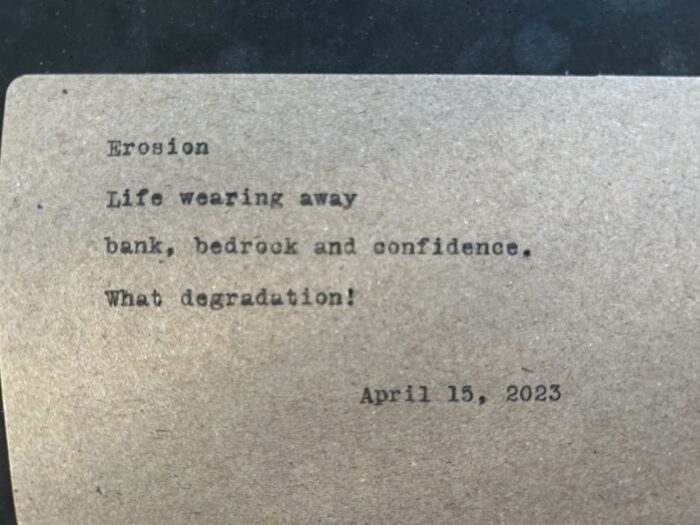
Erosion
Haiku 15
Life wearing away
bank, bedrock and confidence.
What degradation!
#lizsharespoems
#30daysofhaiku
#nationalpoetrymonth
It’s the end of body week, folks!
I gotta say, I’m kind of eager to move onto geology tomorrow — it feels more naturally haiku-ish.
But before I do, respiration. (*and yes, I typed 13 when it’s really the 14th. I don’t want to feel rushed!)
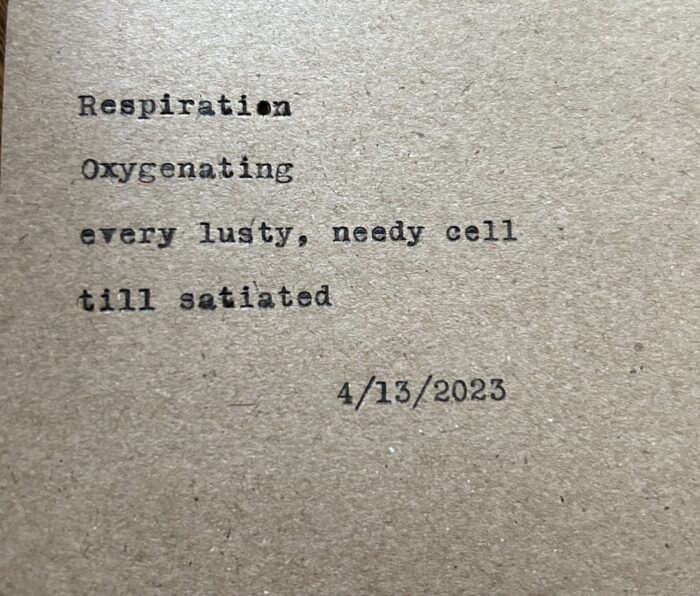
Respiration
Haiku 14
Oxygenating
every lusty, needy cell
till satiated
#lizsharespoems
#30daysofhaiku
#nationalpoetrymonth
What got into me, picking excretion as a poetry prompt?
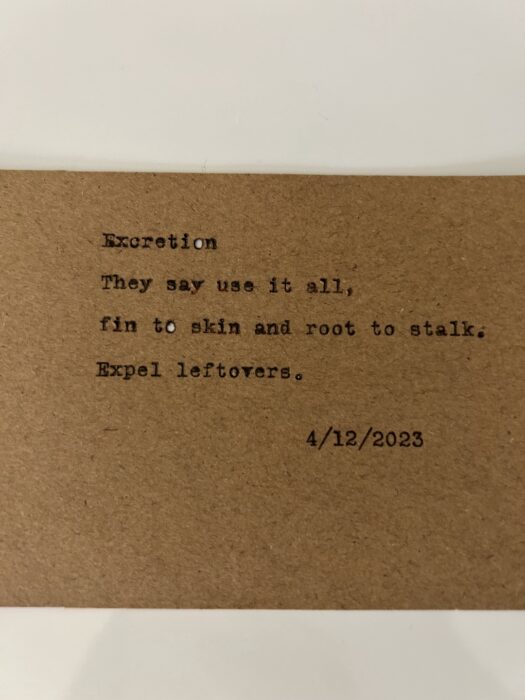
Excretion
Haiku 13
They say use it all,
fin to skin and root to stalk.
Expel leftovers.
#lizsharespoems
#30daysofhaiku
#nationalpoetrymonth
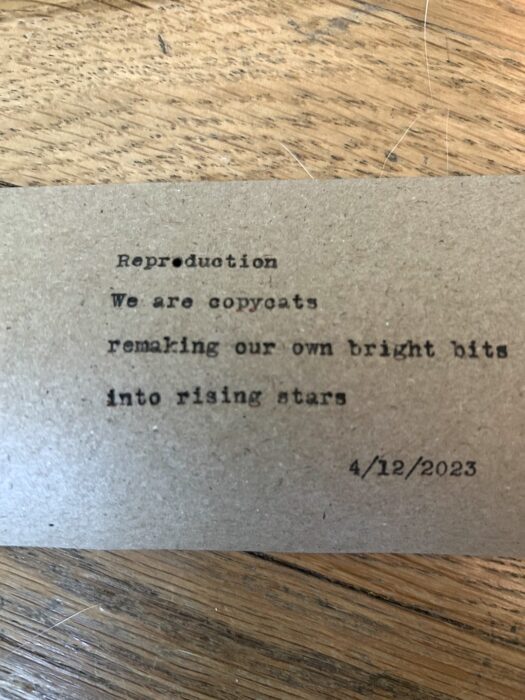
Reproduction
Haiku 12
We are copycats,
remaking our own bright bits
into rising stars
#lizsharespoems
#30daysofhaiku
#nationalpoetrymonth
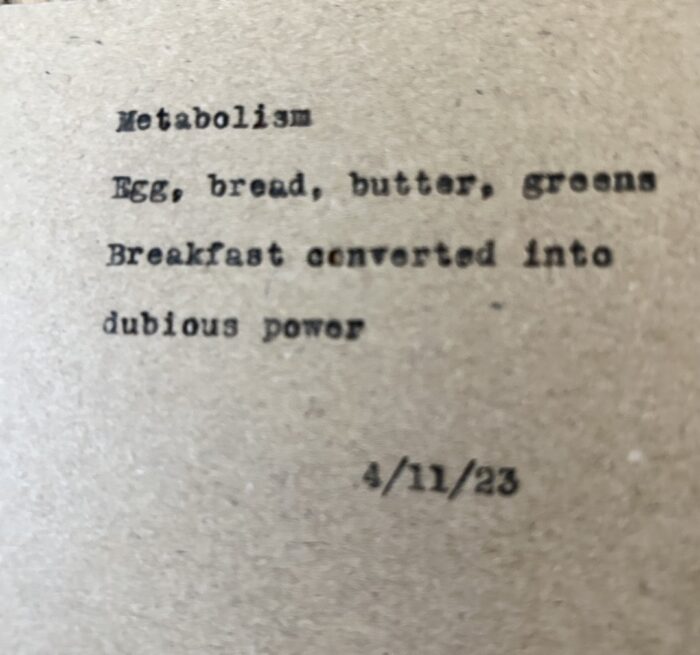
Metabolism
Haiku 11
Egg, bread, butter, greens
Breakfast converted into
dubious power
#lizsharespoems
#30daysofhaiku
#nationalpoetrymonth
So, this year we jumped right in with writing haiku — I didn’t carve out the time to prep myself or anyone else!! — but I’ve been meaning to swing back around and talk about the form a little.
Haiku, as you know, is a traditional Japanese form that has been played with and differently understood over time and by different writers and teachers. I follow the (westernized) 5/7/5 syllabic pattern because I like working within a defined form as both a challenge and a freedom. (The freedom being that I don’t have to think about form — it exists already as a container. I just fill it up!)
There are also other distinctive elements of the haiku, including the kigo (a word that names, points to, or suggests a season) and the kireji (the turn or surprise part way through the poem). I try to stay mindful but not bound by the rules. This year, for example, I’m trying very much to allow for a turn between line 1 and 2 or line 2 and 3, but I’m not focusing on seasons because I’ve given myself these scientific process prompts.
Anyway, this is the point of a poetic license, I think. To know (and respect) the rules and traditions and then to use them to say what you want to say today….
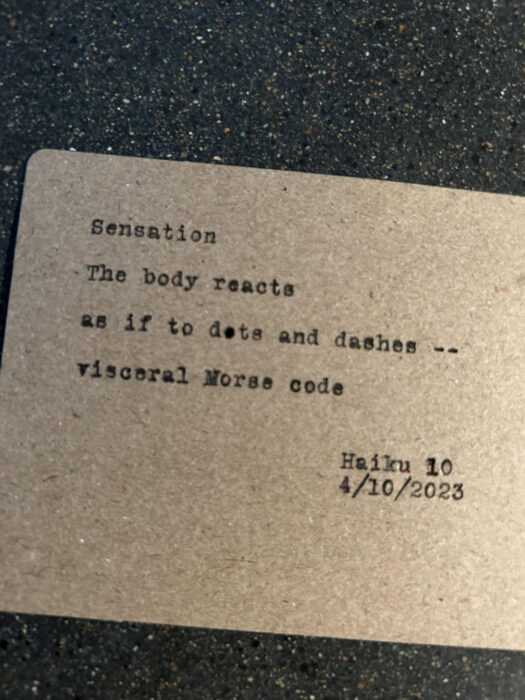
Sensation
Haiku 10
The body reacts
as if to dots and dashes –
visceral Morse code
#lizsharespoems
#30daysofhaiku
#nationalpoetrymonth
As a reminder, this week’s haikus are processes of the body.
Yesterday, digestion. Today, circulation.
I thought about musing on my raynaud’s syndrome, but it was over 70 degrees here today so that seemed slightly off the mark. Instead I went with a pretty glorious double meaning.
“Check it out…!!”

Circulation
Haiku 9
Blood and oxygen
and stacks of library books:
good circulation
#lizsharespoems
#30daysofhaiku
#nationalpoetrymonth